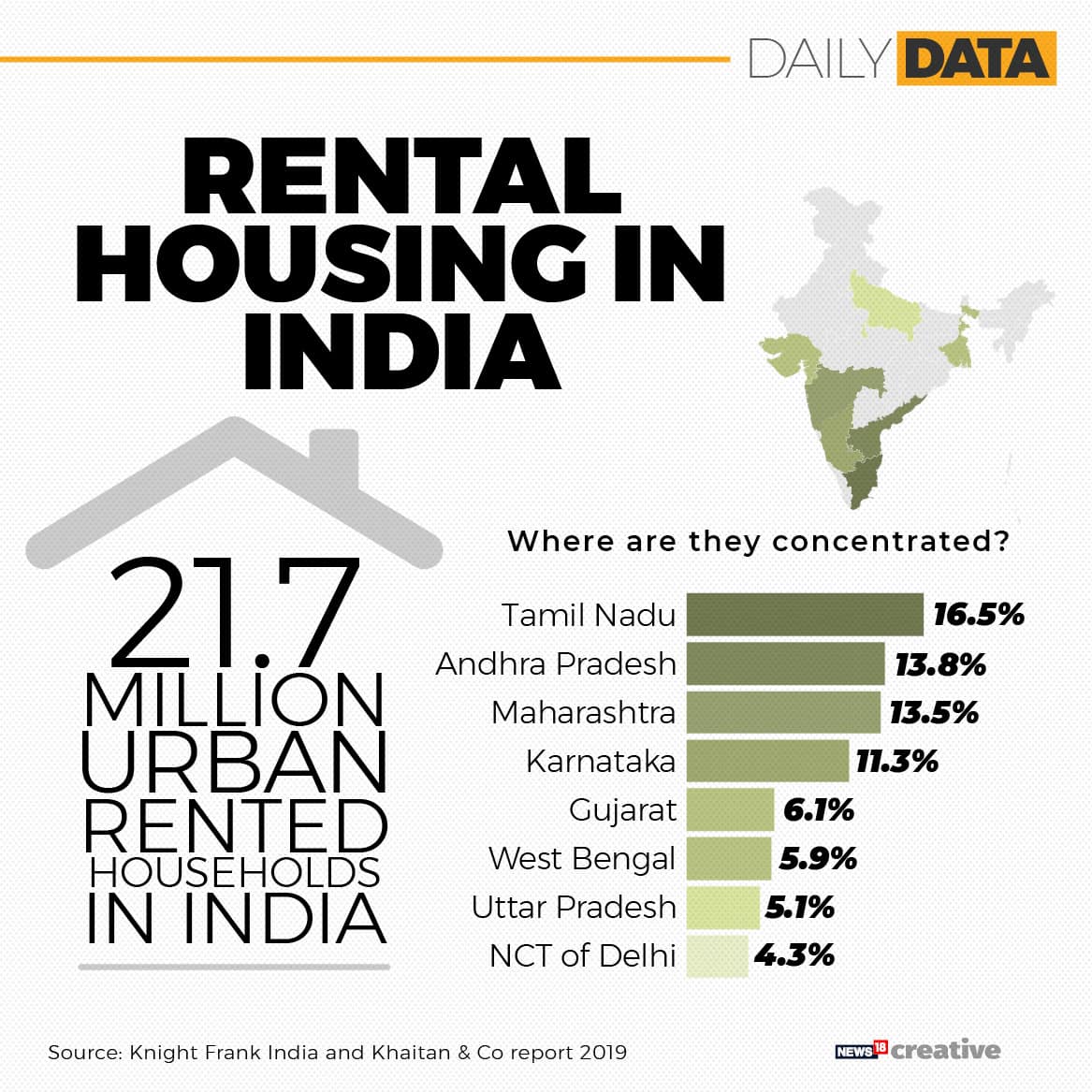



India has nearly 11.09 million urban vacant housing units of which 10 states and union territories contribute to 78 percent (8.64 million) of total vacancy levels and the proposed Model Tenancy Act has huge potential to institutionalise rental housing in the country, according to a new report.
Tamil Nadu has the highest percentage share of rented households in India followed by Andhra Pradesh and Maharashtra, the report said.
The report estimates that the Draft Model Tenancy Act, 2019 (MTA) will be instrumental in institutionalising rental housing which is largely unorganised in India. If rental housing is institutionalised with the introduction of a legal framework as envisaged, it would help in creating large purpose-built rental stock which can also attract institutional investments in the long run.
Of the 21.72 million rented households in urban India, eight states and union territories – Tamil Nadu, Andhra Pradesh, Maharasthra, Karnataka, Gujarat, West Bengal, Uttar Pradesh and NCT of Delhi comprise the highest percentage share of rented households in India, the report said.
These eight regions alone comprise 16.63 million or 76.57 percent of the total urban rented households. Tamil Nadu with 16.5 percent has the highest percentage share of rented households in India followed by Andhra Pradesh and Maharashtra, Knight Frank India, an international property consultancy and Khaitan & Co, a law firm has said in a study titled Institutionalising the Rental Housing Market in India – 2019.
Currently, there are 21.72 million urban rented households in India. Tamil Nadu (16.5 percent), Andhra Pradesh (13.8 percent), Maharashtra (13.5 percent), Karnataka (11.3 percent), Gujarat (6.1 percent), West Bengal (5.9 percent), Uttar Pradesh (5.1 percent) and the National Capital Territory (NCT) of Delhi (4.3 percent) together command a substantial 76.5 percent of total urban rented households.
The Draft Model Tenancy Act, 2019 proposes to create a legal framework to bring harmony to the landlord-tenant relationships and balance the scale for both parties. However, there are several areas from the perspective of both the parties where the Act provides no or limited clarity which can create challenges in its implementation. This Act aims to bring stakeholders together and bring rental housing reforms to create an effective rental housing ecosystem in the country.
The report advocates that the Draft Model Tenancy Act, 2019 when implemented will ensure the growth of institutional rental housing in India, especially in its megapolises and metropolises.

"As we move towards a more flexible work environment globally, there is need for the Indian real estate sector too to envisage itself as a service, rather than a product. The addition of over 223 million new urban residents to the cities by 2031 will not be feasible if the rental housing market is not developed. However, in order to truly institutionalise and revive the rental market more thought and debate is required to evolve the Model Tenancy Act into a meaningful, holistic and comprehensive piece of legislation," said Shishir Baijal, chairman and managing director of Knight Frank India.
"Limited policy relating to rental housing and existing legislations unfriendly to landlords or owners of premise have been a big deterrent for creation of rental housing stock in the country. The MTA provides a much-needed independent mechanism specially engineered to deal with issues pertaining to rental premises. MTA will provide for speedy remedies to both owner and occupier of rental properties and will enable the court to deal with more legal factors which require evaluation of various issues arising out of changing environment of complex commercial transactions, government policies and new laws," said Sudip Mullick, Partner of Khaitan & Co.
Discover the latest Business News, Sensex, and Nifty updates. Obtain Personal Finance insights, tax queries, and expert opinions on Moneycontrol or download the Moneycontrol App to stay updated!
Find the best of Al News in one place, specially curated for you every weekend.
Stay on top of the latest tech trends and biggest startup news.